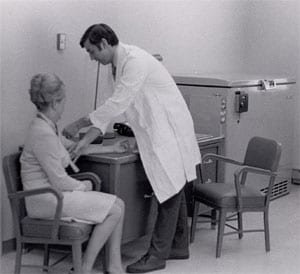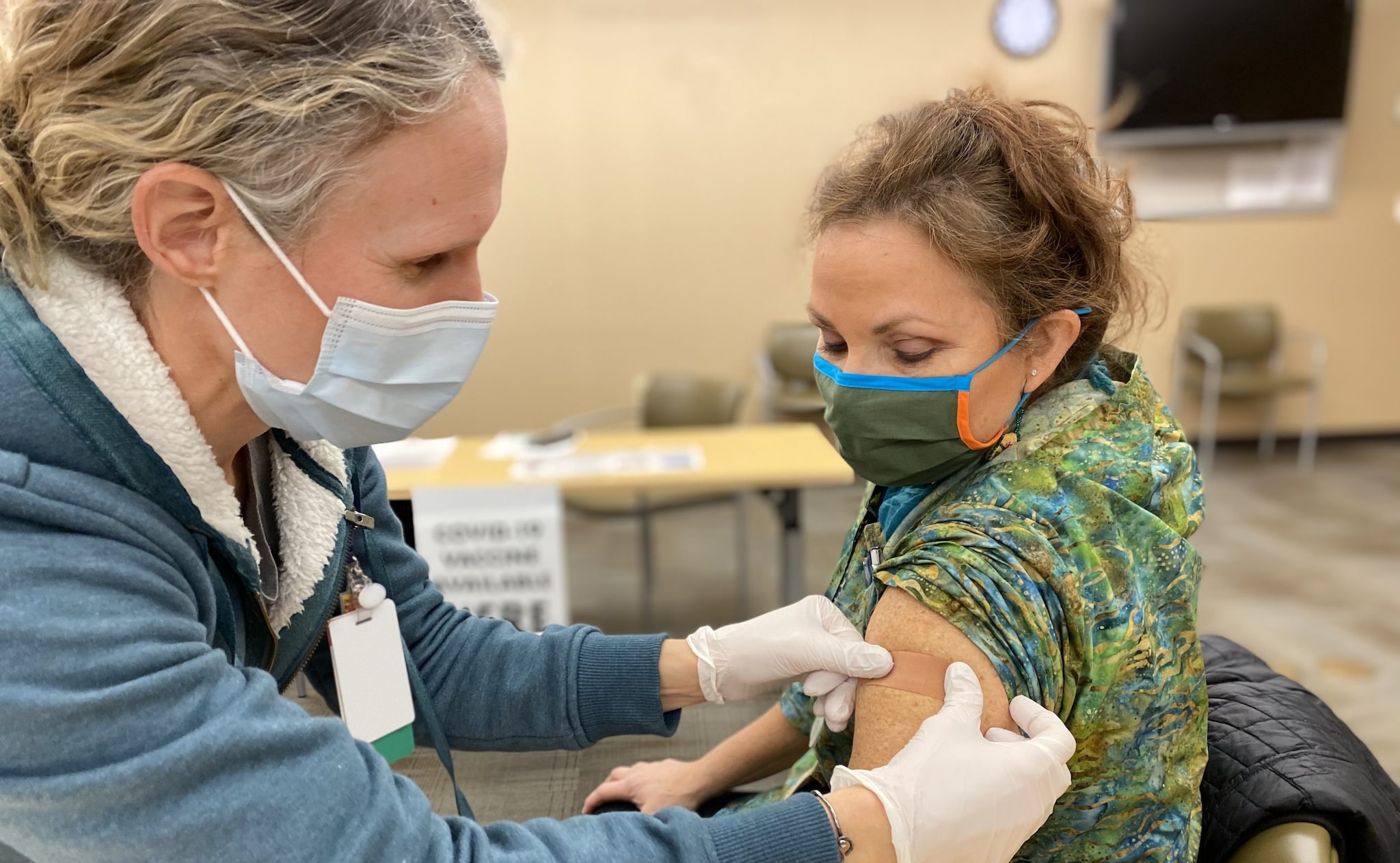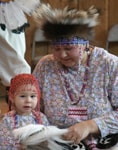Key points
- AIP has a rich history, with origins that predate Alaska's statehood.
- AIP's successes are built on innovative research and collaborative studies.
Milestones
1948 – 1967

- Congress established the Arctic Health Research Center (AHRC, later to become AIP) in Anchorage as part of the U.S. Public Health Service.
- AHRC and the Alaska Native Medical Center conducted collaborative studies on biology and health in the Arctic, including the early treatment and prevention of tuberculosis.
- AHRC conducted research to learn more about viruses, parasites, insect populations, and environmental health in Alaska.
1968 – 1972
- The AHRC laboratory moved to Fairbanks. The epidemiology unit stayed in Anchorage to retain the close association with the staff of the Alaska Native Medical Center.
- Collaborative studies were conducted on a variety of infectious and non-infectious diseases of significance in the Alaska Native people such as mumps, pneumonia, cardiovascular diseases, hereditary diseases, cystic echinococcosis, and anemia.

1973 – 1979
- In 1973, AHRC closed, and CDC assumed responsibility for epidemiology projects in Anchorage. A laboratory was established on the Alaska Native Medical Center grounds and the unit became known as the Arctic Investigations Program (AIP).
- Collaborative studies continued in the areas of infant mortality and childhood infectious diseases such as streptococcal disease (strep throat) and rheumatic fever. A prevention program for streptococcal disease was established.
- Scientists continued to study a variety of illnesses including meningitis, anemia, middle ear infections, hepatitis, and genetic and metabolic disorders. Researchers also explored the epidemiology of cancer and foodborne botulism.
1980 – 1988
- AIP begin to evaluate vaccines that help prevent infections caused by Haemophilus influenzae type b and hepatitis B viruses. Staff also investigated the association between hepatitis B and liver cancer and between the Epstein-Barr virus and nasopharyngeal cancer.
- AIP researchers established an early screening program for the detection and treatment of alveolar hydatid diseases (a disease caused by infection with a tapeworm parasite).
- AIP staff conducted botulism surveillance and provided assistance during outbreaks.
1989 – 1992

- AIP, the Indian Health Service, and the State of Alaska worked collaboratively to establish statewide vaccine programs to help prevent hepatitis B and Haemophilus influenzae type b infections. These efforts led to a dramatic statewide reduction in disease.
- Scientists conducted studies on the association between the human papillomavirus and cervical cancer and researched vaccine options for the prevention of pneumococcal disease.
1993 – 1996

- Vaccine programs for the control of hepatitis A in people living in Alaska were initiated, along with studies to define the extent of hepatitis C in Alaska Native communities.
- Studies on the cause of iron deficiency in Alaska Native people focused on blood loss and a possible role of Helicobacter pylori infection.
- Outbreaks of acute respiratory diseases in Alaska Native infants led to the tracking of hospitalizations from respiratory syncytial virus (RSV) and the evaluation of possible prevention and control strategies.
1997 – 2009
- The new Alaska Native Health Campus was established in Anchorage, and the Alaska Native Medical Center and AIP buildings were completed.
- AIP work focused on the prevention of diseases caused by Streptococcus pneumoniae, Haemophilus influenzae type b, Helicobacter pylori, methicillin-resistant Staphylococcus aureus, and RSV, as well as on control of viral hepatitis.
- In 1998, AIP started the International Circumpolar Surveillance Network to link public health laboratories across the circumpolar North. The network includes ongoing shared surveillance with the United States, Canada, Greenland, Iceland, Norway, Sweden, and Finland.
- New higher containment laboratory space was added as AIP joined the nationwide Laboratory Response Network in 2001. AIP staff assisted with CDC response efforts during the 2001 Anthrax attacks, the 2003 SARS outbreak, the 2009 influenza pandemic, and after several hurricanes.
- In 2006, the Alaska Area Specimen Bank was established in partnership with Alaska Native stakeholders, creating a unique biorepository that is co-managed by federal and tribal governments.
2010 – 2019
- In 2010, the AIP laboratory was renovated to improve research and response capacity, worker safety, and training capabilities.
- Staff continued to work on disease prevention research, which included understanding the effectiveness and longevity of the hepatitis B vaccine. This research is part of an ongoing hepatitis B vaccine demonstration project called VaxDemo and includes the longest standing cohort for this vaccine in the world.
- AIP staff were deployed to assist with national emergencies and outbreaks, including the 2014 West Africa Ebola outbreak, the 2016 Zika virus outbreak, and the 2018 Democratic Republic of the Congo Ebola crisis.
- In 2015, AIP received the first next generation sequencing (NGS) instrument and began expanding local NGS and whole genome sequencing capacity for bacterial pathogens in Alaska.
2020 – present
- In 2020, during the initial COVID-19 surge, AIP laboratory personnel worked side by side with staff from the Alaska State Public Health Laboratories to support testing needs in the state and served on contact tracing teams for the city of Anchorage and State of Alaska.
- AIP also provided expertise to local, state, and tribal health authorities on screening, prevention, and vaccination strategies.
- AIP staff provided expertise during the 2022 monkeypox and 2023 Marburg virus outbreaks.
- In 2022, AIP implemented whole genome sequencing for routine invasive bacterial disease surveillance.
- In 2023-2024, AIP studied Niresevimab’s effectiveness against Respiratory syncytial virus (RSV). They found it to be 89% effective at protecting Alaska Native infants from RSV-related hospitalization.
- In 2024, AIP staff traveled to remote Alaskan communities to continue work on VaxDemo (the 40-year hepatitis B vaccine study). The team collected samples from people who received the primary hepatitis B vaccine series 40 years ago to determine their current level of protection.
- In 2025, AIP investigated an increase in acute rheumatic fever in partnership with the state and updated guidance for healthcare providers to improve patient outcomes.

